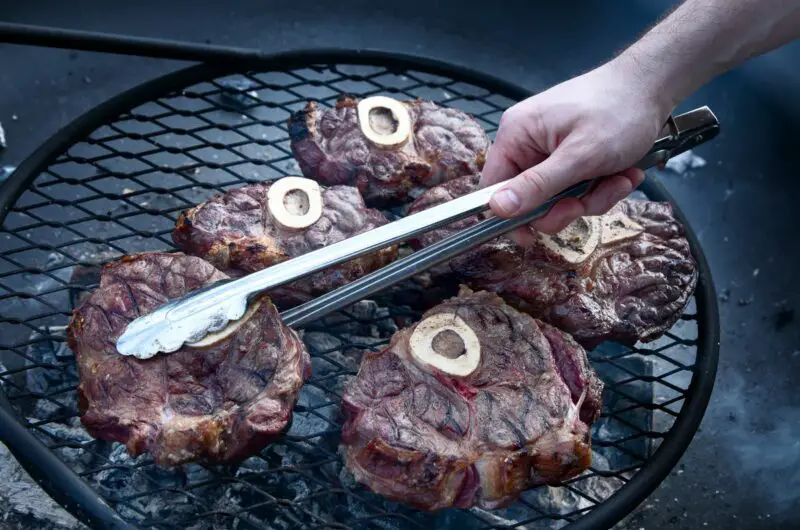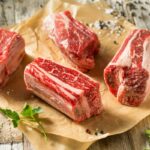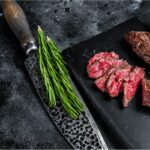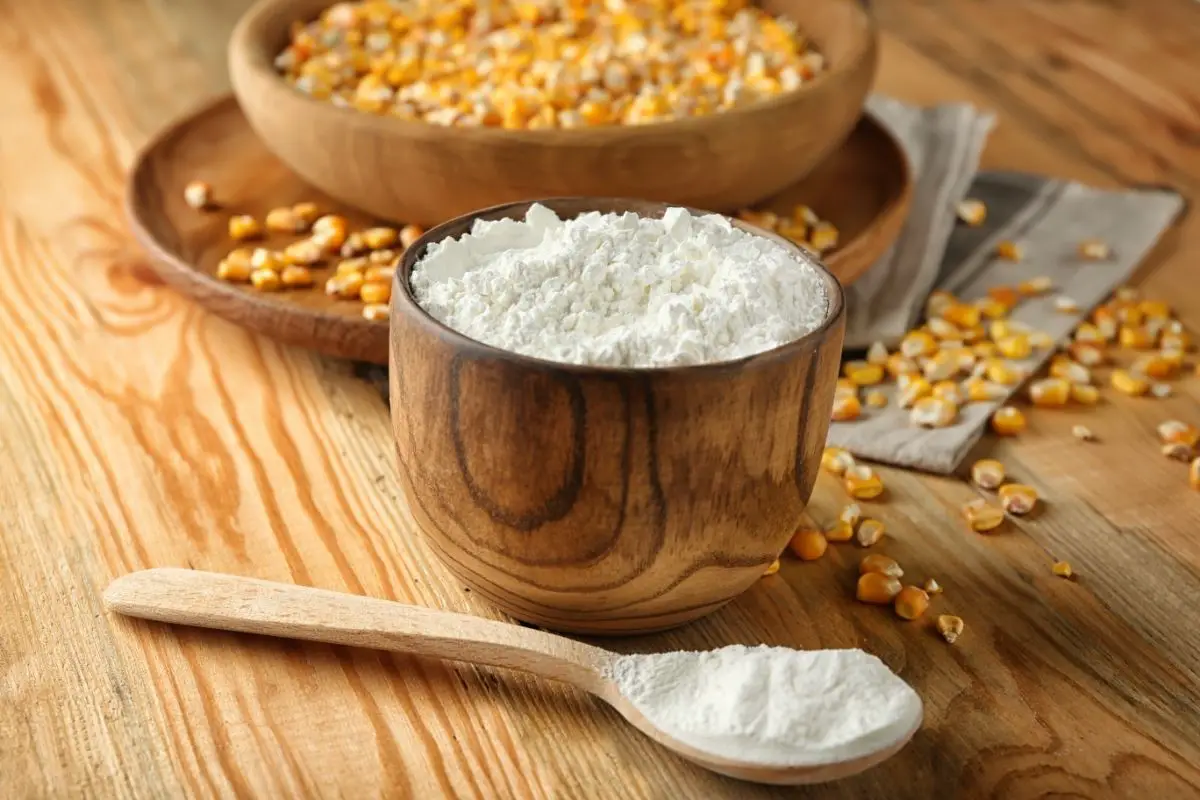The beef shank is a cut of meat from a cow.
You may have a recipe you want to make that asks for a specific cut of meat, such as beef shank, and it may feel irreplaceable, but with the right knowledge of why the cut is being used you can easily replace it with another cut from the cow or even a different meat all together.
Beef shank is particularly good for braised dishes such as Osso Bucco or Beef Bourguignon, but no matter what recipe you are using, when you know what the meat is bringing to the recipe you can replace it easily.
In today’s article we will discuss why people use beef shank in certain recipes, what it can bring to a dish, as well as what the texture and taste of beef shank is and what other cuts can substitute it.
Keep reading to learn more about beef shank, what the cut brings to a recipe, and what other cuts of meat are a good substitute for beef shank. Find this out and more below!
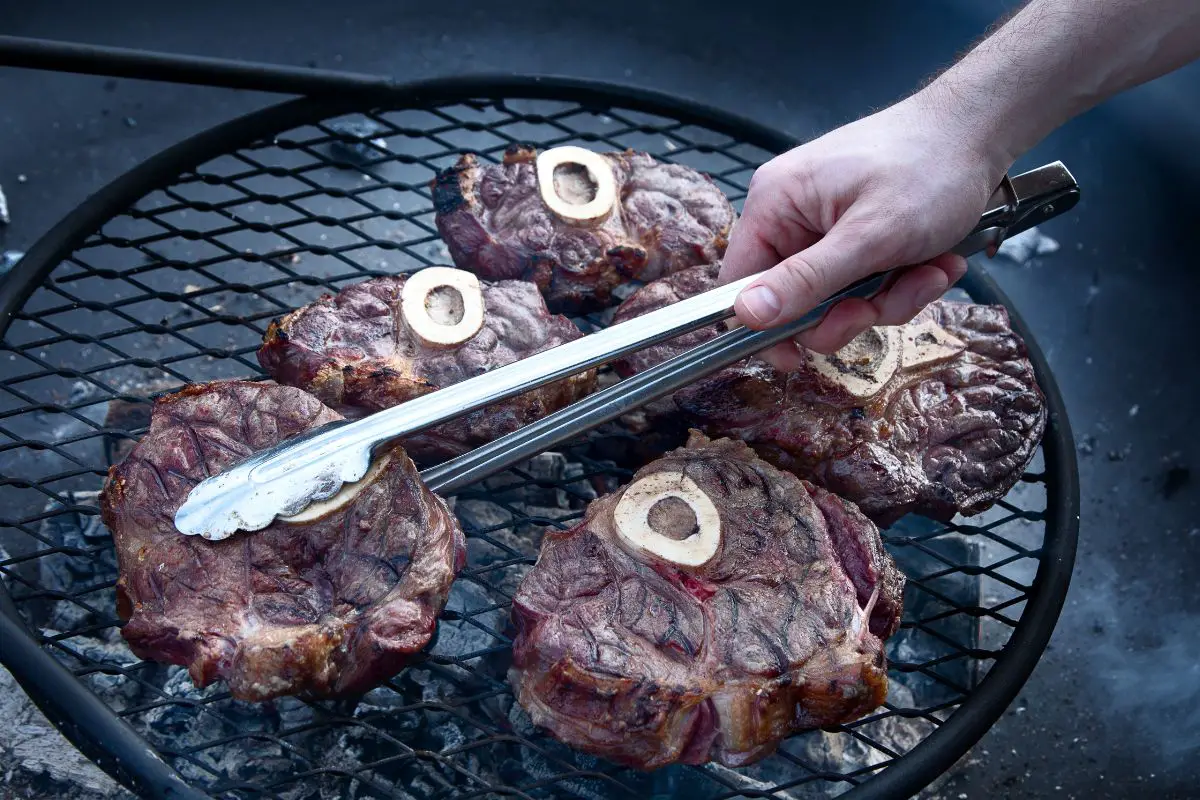
What Is A Beef Shank?
So when you go to a butcher and ask for a beef shank they will give you a specific cut from the cow, in other words a specific part of the cow’s body.
The shank describes the cow’s leg and the beef shank is basically the cow’s thigh, the corresponding cuts of beef would be the shin and the leg itself.
Consider that the shank of the cow is a muscle that is very well used by the cow, so as a result it is very sinewy, but also can be tough and dry.
As it is a tough and dry meat it can withstand longer cooking processes well, such as braising. By the end of a long stewing or braising process the shank becomes very tender and fatty thanks to the sinew content of the shank itself.
Bone and cartilage are both rich sources of flavor, as minerals seep out from the bone, the bone marrow, and the cartilage, a deep and rich flavor is added to thes stew the shank sits in.
This is why it is used for brazing, both as the meat will hold together fairly well and become tender in the end, but also because the bone-in cut allows extra flavor as well as thickening from the bone itself.
Good Substitutes For Beef Shank
So, ideally when substituting the shank, we want something fatty but ideally with the bone in.
Beef Arm Roast
The Beef arm roast is another bone in style of meat that comes from the primal chuck of the cow. In non butchery terms, the beef arm roast is basically the shoulder joint of the cow.
Like the shank, the arm roast is naturally tough and full of sinews thanks to it being a frequently used joint.
As a result, the arm roast is another cut commonly used from braising and in things like pot roasts as it brings a lot of extra flavor to stew or sauce and viscosity.
As the joint allows natural minerals to seep into the sauce from the bones it will bring the same flavors that a beef shank would. If your butcher doesn’t have any beef shank, he may suggest an arm roast instead.
Chuck Roast
The chuck roast is a cut of beef from a similar area as the beef arm roast, but comes from both the shoulder and the neck.
The chuck roast has some exemplary marbling in it that can be similar to the sinews in the beef shank, this will lead to a fatty cut of meat which will be exactly what we want as a substitute for the beef shank.
This also makes it tough, which means the chuck roast also lends itself to slow cooking and braising.
Usually a chuck roast is boneless, but you may be able to get it bone in from a butcher.
Without the bone you don’t get that gamey flavor that a beef shank would bring so you could arguably get a different bone from the cow and simply add it in so these minerals are still present in your sauce or stew.
Silverside Or Bottom Round
Silverside, like beef shank, comes from the hindquarters of cattle, just above the shank.
It is called Silverside by some butchers, mainly in the Uk and New Zealand, but in the US it may be called a bottom round or outside round. As it is from the same areas as beef shank is we can expect similar qualities from it.
It is tough and sinewy but often lacks the bone of a beef shank. Nonetheless it operates very similarly to a beef shank in terms of its meat.
They both absorb flavor well and are tough when raw, but lend themselves to slow booking which allows both cuts to become much more tender and edible.
We would suggest perhaps adding a bone broth or beef bone in with the silverside to get the flavors from the bone that we enjoy in the beef shank.
Skirt Steak
Skirt steak is another boneless cut that comes from the cows ‘skirt’ which is its stomach muscle. If we’re talking tough cuts of beef with lots of connective tissue, then skirt steak is exactly that.
While many would avoid this kind of texture, this texture, which is also present in beef shank, is actually perfect for long braised dishes which we would use beef shank for.
The fatty connective tissue is ideal to help mimic a beef shank. But again, skirt steak is a boneless cut and part of the uniqueness of the beef shank is its inclusion of a bone.
So again we would suggest including some kind of bone or bone based broth in the stew in addition to this as the meat as it will bring flavors closer to the bone shank and increase the viscosity of your sauce or stew in any case.
Veal Shank
Veal shank is likely going to be more expensive than beef shank, but if you want a close substitute, this is it. While veal does taste different to beef, in the way we will use it it’s not so noticeable.
Mainly because veal is gamey, but with a bone in beef shank we expect to get gamey flavors from the bone.
If you do use veal shank expect a more gamey flavor, or perhaps take the bone out to reduce these gamey flavors if that isn’t your thing.
Nonetheless the veal shank is similarly tough, if not more tough than the beef shank.
Consider that a deer will actually have way more muscle than a cow will and will exercise their leg muscles a lot more than a cow already does.
As a result veal is ideal for cooking in stews and such as it is tough but lends itself perfectly to long cooking times.
Oxtail
Oxtail sounds like it comes from an Ox, which can be true, but oxtail is simply the bone and muscle that surrounds the tail of a cow.
Again, this sounds weird but is very traditionally used a lot in Caribbean cuisine, and is a common ingredient in many dishes. It can also come from veal.
Oxtail is generally very rich in flavor and can also be tough like beef shank. This said it is a common cut used in stews and slow cooked dishes.
It is a part of the cow that has a high amount of cartilage and connective tissue so as a result you can expect it to add a lot of thickness and viscosity to sauces, stews, and broths.
Oxtail does not have as much meat as a beef shank so it can make sense to add a little extra meat here if desired.
Final Thoughts
It’s clear that beef shank is included in many recipes where slow cook times allow the tough meat to become tender, while also utilizing the connective tissue and cartilage of the shank to create thickness in the sauce.
We also get extra flavor from the bones of the shank, so if you end up using a cut that is boneless it can be worthwhile to add a bone in or to add beef stock that has been made with bones.
The Best Cuts To Substitute Beef Shank
Course: Substitutes4
servings30
minutes40
minutes300
kcalIngredients
Beef Arm Roast
Chuck Roast
Silverside Or Bottom Round
Skirt Steak
Veal Shank
Oxtail
Directions
- Decide on what substitute you need
- Pick a substitute from the list above
- Read what you need to substitute with
- Create the recipe and enjoy
Recipe Video
https://youtu.be/mzOQ1dNmwZEVideo can’t be loaded because JavaScript is disabled: Beef Shank – The Most Underrated Steak (https://youtu.be/mzOQ1dNmwZE)- What Exactly Do Chickpeas Taste Like? Is There A Distinct Flavor? - September 30, 2023
- Top 11 Low Carb Options at Sonic Drive-In for Keto Diet - September 30, 2023
- What Should You Serve Alongside Potato Salad? 8 Incredible Side Dishes - September 30, 2023

